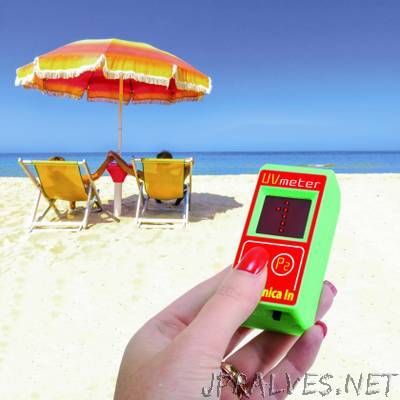
“It measures solar radiation and visualizes the corresponding value on the integrated display of a miniaturized Arduino, in order to tell us when to expose ourselves to the sun… Summer is just around the corner and whether you choose the seaside or the mountains for your holidays, there is no doubt that most of the people look for a sunny summer in order to come back with the most enviable suntan. Since sunlight contains ultraviolet rays, which are by the way responsible for our suntan, the first concern when it comes to sun rays is to protect ourselves, at least during the first days, with a sun lotion of adequate protection and by taking care to remain outside as little as possible, unless we have a sunshade or a sun umbrella. It is also useful to know the UV quantity contained in the sunlight, in fact, according to our geographic location and weather conditions, the atmosphere can retain UV rays more or less effectively. Getting to know the concentration (index) of UV rays is important because UV rays do not only cause sunburns but are also responsible for skin tumors, that is why we should try to get only the good part from the sun, which is composed of visible light or infrared light, and keep ultraviolet rays as far away as possible. This is the same reason why it is not recommended to sunbathe too long in certain geographical areas and on certain days. On an international level, UVI or UV index is the recognized parameter used to classify UV rays intensity, which is better described in the box you will find in these pages; that’s why in this article we are going to show you how to realize a device to measure and display the UV index, that you might use in order to verify the quantity of ultraviolet rays you are exposed to during your sunbathing session or, if you stay in the city, this will tell you when not to go out during the hottest afternoons in July and August and when you can go out with peace of mind, especially if you suffer from skin problems.”
